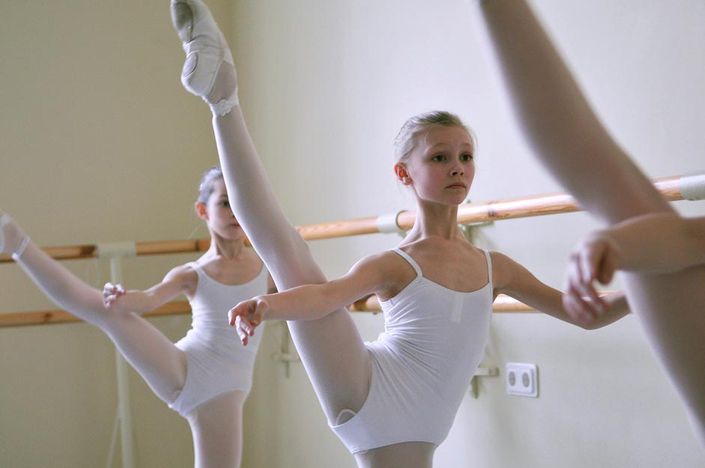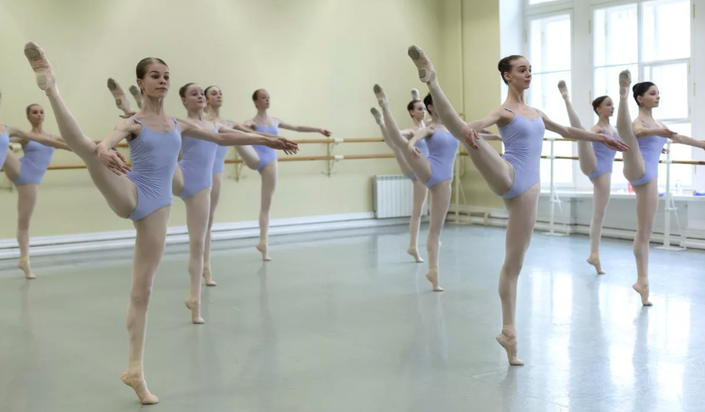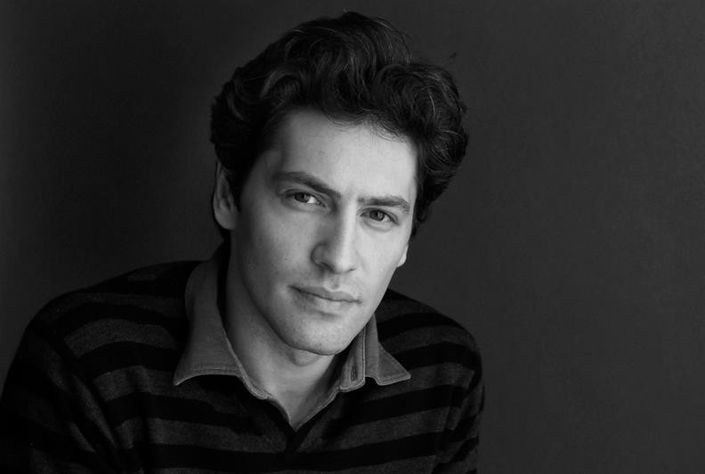
This resource provides a traditional introduction of the first year of the Vaganova Ballet Syllabus for dance teachers and dance students. With its highly specialized technique and dynamic history, the Vaganova Ballet system can seem inaccessible. This Vaganova Ballet Syllabus aims to demonstrate that the underlying principles of the first year in ballet education are founded on basic movement. This resource focuses on key movement principles of ballet, rather than specific steps and emphasis correct placement, alignment, and épaulement, seeking always to allow these to arise through a developing sense of movement. In the first year, basic skills are introduced. The forms of the steps and slow tempos are an excellent way of developing the use of the body, legs, and feet. The concentration of the first-year exercises of the Vaganova Ballet Syllabus is characterized by a particular musicality, precision of movement, and clarity of line. Within the steps, it’s emphasized to find the efficiency and deep physical experience of which the body is capable, through this highly developed training system.

"The Vaganova Ballet Level 1 video program is truly a game changer but, were I only to say so, it would not matter much. Yet, my daughter started taking it out of curiosity, unbeknownst to her own Russian teacher, but after just two days the very Russian teacher asked me what had changed in Elizabeth’s practice, as she was impressed by the sudden, inexplicable improvement. When we told her about the Vaganova Ballet Level 1 program, she looked at each and every video. She confirmed that they are all made very professionally and that Elizabeth is certainly welcome to use them now and in the future in addition to her in-person classes. What Elizabeth likes the most is the comprehensiveness of the syllabus and the perfect way the program teaches how to perform all movements correctly."
Maurizio Bendandi- Learn Ballet Online Students

Exceptionalism truly defines and drives Arsen Serobian at Dance Channel TV Ballet Academy. It is rare to find a professional ballet artist and mentor, who has mastered Vaganova ballet theory/method, and now dedicates his tireless passion to the proper development of his students. Dance Channel TV Ballet Academy offers serious students a once in a lifetime opportunity to excel far beyond the resources provided by the world's most prestigious ballet academies.
- Bruce Benton, Student
What a relief to know there is someone like Arsen who still believes in the beauty and healing of ballet. His attention to detail, passion for perfection and mischievous sense of humor make every class a joy. If you're serious about dance or just enjoy watching for pleasure, you've come to the right place! He's the best with the best!
- Rania Pallad, Parent
WHAT IS RUSSIAN VAGANOVA BALLET TECHNIQUE? WHAT MAKES IT DIFFERENT?
People often ask about Russian Vaganova Ballet Technique and training; what is it exactly that makes it unique? Vaganova training is the purest form of teaching classical ballet. It is a thorough and methodical technique, which allows the dancer to learn the proper use of muscles with control, strength and grace, without introducing tension or overuse of the wrong muscles. Vaganova Ballet Technique was developed by Agrippina Vaganova (1879-1951) a distinguished Russian ballet dancer, choreographer and teacher. She danced professionally with the Mariinsky Ballet in St. Petersburg. She became known as the "Queen of Variations" for her brilliant solos. As a dancer, she was extremely self-critical and aware of her inadequacies of her own technique. When she retired from dancing to become a teacher, she became more and more conscious of her desire to investigate the “science of ballet,” to find effective means of training classical dancers. Through studying the French, Italian, Danish and Russian methods, Vaganova designed a training method and began to produce a few dancers. At the age of 17, these dancers were catching the attention of the critics who were astonished by the rich orchestration of their movements, brilliance of their turns, and the unusual expressiveness of their arms. Gradually, more dancers were produced through Vaganova technique. This, in turn, affected the performance quality of the classical ballets, such as Swan Lake and Esmerelda. The performance style of the dancer was strengthened and polished, from the girls in the corps de ballet to the leading ballerinas. Something they had in common was their manner of execution, a single style, a single dance "handwriting," which manifests itself clearly in their harmonious plasticity of movement, the expressiveness of their arms, suppleness (yet at the same time the iron aplomb of the body), and the noble and natural placement of the head. Vaganova’s method also influenced the development of the male dancer; helping them find the iron aplomb and stability that enabled them to find support in their body to provide the strength for turns and jumps. These are the distinctive traits of the Vaganova technique. Some key techniques Vaganova incorporated into her teaching method are:
- Special attention to epaulement (turning of the shoulders and upper body)
- Correct training of the arms (port de bras), fluidity, placement, coordination with the head and all movements
- Precise coordination of the whole body, working as one unit
- Unique sense of musicality (Russian-style pianist class accompanist)
Vaganova’s system aimed at teaching students to “dance with the whole body.” The systematic design of the classes carefully teaches the technique without room for error or bad habits to develop. The exercises naturally progress and are easily executed by teaching the correct muscles to respond to the movement. The technique naturally allows the dancer to progress to the next level of movement easily and free of tension or lack of control. The Syllabus moves at an appropriate pace to carefully train the young dancer, which compliments their age and rate of growth, so that by the age of 17, the dancer is properly equipped to go onto further pre-professional study.
We tried many ballet classes/studios trying to find the right fit for my 6yo daughter. Too many to count. Arsen is the first instructor who actually challenged my daughter and treated her like she was capable of more than even she or I thought. He gives tons of personal attention and corrections to every student. He is strict and disciplined with the kids but is still kind and funny and my daughter just adores him. All of the students and families have been welcoming and we feel like we are a part of a wonderful ballet family that my daughter can grow up in. I trust Arsen 100% with my daughter’s dance future. If your child has a passion for dance and you want the best technical training, I don’t believe there is a better choice in Los Angeles than Dance Channel TV Ballet Academy and Learn Ballet Online!
- Amy B , Parent
Get started now!
Course Curriculum
-
Start3. Demi Plié in I, II, V and IV (7:53)
-
Start4. Grand Plié I, II, V and IV (3:38)
-
Start5. a.d Battement Tendus (5:02)
-
Start5. c,d Battement Tendus (8:50)
-
Start5. e.f Battement Tendus (3:18)
-
Start6. Battement Tendu Jeté (9:00)
-
Start7. 1st and 3ed port de bras (2:03)
-
Start8.9. Demi-round and Rond de jambe par térre en dehors and en dedans (6:37)
-
Start10. Rond de jambe par terre en dehors and en dedans on demi-plies (1:48)
-
Start11. Plie-soutenus (5:00)
-
Start12. Sur le cou-de-pied (2:59)
-
Start13. Battement fondu (6:18)
-
Start14. Battement tendu soutenu (3:26)
-
Start15. Battements retires sur le cou-de-pied and 90º (3:17)
-
Start16.Battement frappés in to the floor and to 30º (3:19)
-
Start17. Petit Battement (3:49)
-
Start18. Battement doubles frappés in to the floor and to 30º (6:46)
-
Start19. Rond de jambe en l’air ed dehors and en dedans (2:50)
-
PreviewAdagio
-
Start20. Relevé lent (5:20)
-
Start21. Développé passé (3:13)
-
Start22. Grand Battement (4:17)
-
Start23. Releves in 1st 2ed and 5th straight legs and in demi-plies (4:47)
-
Start24. Port de bras back, and side. (2:51)
-
Start25. Pas de bourree suivi (2:29)
-
Start26. 27. Pas de bourree (face to the barre) & Pas coupe on flat and releve (5:19)
-
Start28. Demi-detourne and Detourne (2:37)
-
Start29. Preparation for pirouette sur le cou-de-pied in V en dehors and en dedans. (3:46)
-
StartSoutenu en tournant
-
StartQuiz Barre
Your Instructor

About Us and our team. The reason we have launched "Learn Ballet Online" is because Ballet is a very complex and difficult art form. It is hard to understand until you start executing it. It is a multidimensional activity, involving physical, emotional and psychological elements. We do not believe that you can learn Ballet movements online, but you can learn the theory and comprehend how those movements are executed. Muscle memory can be a blessing and a curse - if you take a couple classes and learn incorrect technique, it will be very difficult to change! But, if you can understand the proper placement of your limbs and muscles, with the help of your teacher, your mind and body can guide you in the right direction.
No matter what style of dance you do, it is critical to train your body properly and practice correct technique to avoid injury. There is no instant gratification. Ballet is a process, a journey that you must be ready to take.
Whether your goal is to become a professional dancer, or to practice for your own enjoyment, taking our courses will offer you an opportunity to learn in-depth execution of classical steps. These steps are explained in accordance to a syllabus. Each lesson is crafted with instructions for execution of specific ballet combinations.
Frequently Asked Questions
Get started now!
Featured Courses




